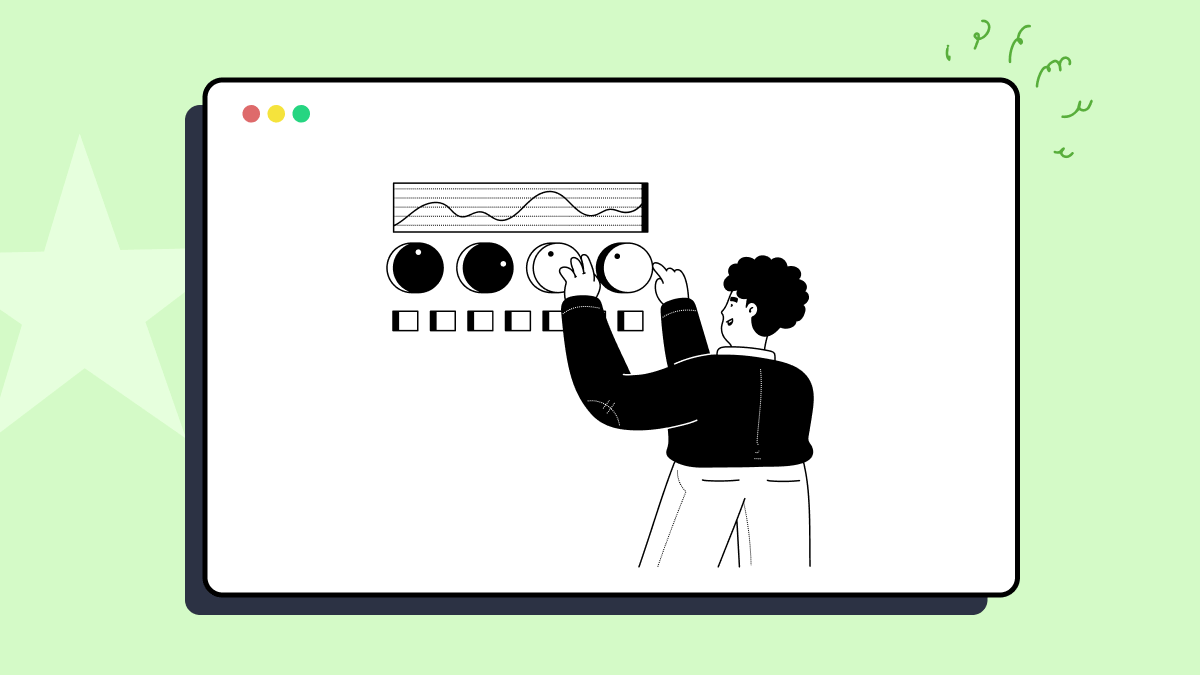How to use spawnFallingBlock method of be.seeseemelk.mockbukkit.WorldMock class
Best MockBukkit code snippet using be.seeseemelk.mockbukkit.WorldMock.spawnFallingBlock
Source: WorldMock.java
...634 // TODO Auto-generated method stub635 throw new UnimplementedOperationException();636 }637 @Override638 public FallingBlock spawnFallingBlock(Location location, MaterialData data) throws IllegalArgumentException639 {640 // TODO Auto-generated method stub641 throw new UnimplementedOperationException();642 }643 @Override644 @Deprecated645 public FallingBlock spawnFallingBlock(Location location, Material material, byte data)646 throws IllegalArgumentException647 {648 // TODO Auto-generated method stub649 throw new UnimplementedOperationException();650 }651 @Override652 @Deprecated653 public FallingBlock spawnFallingBlock(Location location, int blockId, byte blockData)654 throws IllegalArgumentException655 {656 // TODO Auto-generated method stub657 throw new UnimplementedOperationException();658 }659 @Override660 public void playEffect(Location location, Effect effect, int data)661 {662 // TODO Auto-generated method stub663 throw new UnimplementedOperationException();664 }665 @Override666 public void playEffect(Location location, Effect effect, int data, int radius)667 {...spawnFallingBlock
Using AI Code Generation
1import org.bukkit.Material;2import org.bukkit.entity.EntityType;3import org.bukkit.entity.FallingBlock;4import org.bukkit.event.EventHandler;5import org.bukkit.event.Listener;6import org.bukkit.event.entity.EntityChangeBlockEvent;7import org.bukkit.event.player.PlayerInteractEvent;8import org.bukkit.plugin.java.JavaPlugin;9import org.junit.jupiter.api.Test;10import org.junit.jupiter.api.extension.ExtendWith;11import org.mockito.Mock;12import org.mockito.junit.jupiter.MockitoExtension;13import be.seeseemelk.mockbukkit.MockBukkit;14import be.seeseemelk.mockbukkit.ServerMock;15import be.seeseemelk.mockbukkit.WorldMock;16@ExtendWith(MockitoExtension.class)17{18 private JavaPlugin plugin;19 private ServerMock server;20 private WorldMock world;21 public void testFallingBlock()22 {23 server = MockBukkit.mock();24 world = server.addSimpleWorld("world");25 server.getPluginManager().registerEvents(new TestListener(), plugin);26 FallingBlock fallingBlock = world.spawnFallingBlock(world.getSpawnLocation(), Material.STONE.createBlockData());27 fallingBlock.setDropItem(false);28 fallingBlock.setHurtEntities(false);29 fallingBlock.setTicksLived(100);30 fallingBlock.setVelocity(fallingBlock.getVelocity().setX(0.1));31 }32 {33 public void onPlayerInteract(PlayerInteractEvent event)34 {35 event.getPlayer().sendMessage("onPlayerInteract");36 }37 public void onEntityChangeBlock(EntityChangeBlockEvent event)38 {39 if (event.getEntityType() == EntityType.FALLING_BLOCK)40 {41 event.getPlayer().sendMessage("onEntityChangeBlock");42 }43 }44 }45}spawnFallingBlock
Using AI Code Generation
1import static org.junit.Assert.assertEquals;2import org.bukkit.Material;3import org.bukkit.block.Block;4import org.bukkit.entity.FallingBlock;5import org.junit.Test;6import be.seeseemelk.mockbukkit.MockBukkit;7import be.seeseemelk.mockbukkit.ServerMock;8import be.seeseemelk.mockbukkit.WorldMock;9{10 private ServerMock server;11 private WorldMock world;12 private FallingBlock fallingBlock;13 public void testFallingBlock()14 {15 server = MockBukkit.mock();16 world = server.addSimpleWorld("world");17 fallingBlock = world.spawnFallingBlock(world.getBlockAt(0, 0, 0).getLocation(), Material.STONE.createBlockData());18 assertEquals(Material.STONE, fallingBlock.getBlockData().getMaterial());19 fallingBlock.setDropItem(false);20 assertEquals(false, fallingBlock.getDropItem());21 }22}23at org.junit.Assert.assertEquals(Assert.java:115)24at org.junit.Assert.assertEquals(Assert.java:144)25at com.github.johnnyjayjay.spigotblocks.TestFallingBlock.testFallingBlock(TestFallingBlock.java:30)26import static org.junit.Assert.assertEquals;27import org.bukkit.Material;28import org.bukkit.block.Block;29import org.bukkit.entity.FallingBlock;30import org.junit.Test;31import be.seeseemelk.mockbukkit.MockBukkit;32import be.seeseemelk.mockbukkit.ServerMock;33import be.seeseemelk.mockbukkit.WorldMock;34{Blogs
Check out the latest blogs from LambdaTest on this topic:
I was once asked at a testing summit, “How do you manage a QA team using scrum?” After some consideration, I realized it would make a good article, so here I am. Understand that the idea behind developing software in a scrum environment is for development teams to self-organize.
JavaScript is one of the most widely used programming languages. This popularity invites a lot of JavaScript development and testing frameworks to ease the process of working with it. As a result, numerous JavaScript testing frameworks can be used to perform unit testing.
If you pay close attention, you’ll notice that toggle switches are all around us because lots of things have two simple states: either ON or OFF (in binary 1 or 0).
Automation Testing Tutorials
Learn to execute automation testing from scratch with LambdaTest Learning Hub. Right from setting up the prerequisites to run your first automation test, to following best practices and diving deeper into advanced test scenarios. LambdaTest Learning Hubs compile a list of step-by-step guides to help you be proficient with different test automation frameworks i.e. Selenium, Cypress, TestNG etc.
LambdaTest Learning Hubs:
- JUnit Tutorial
- TestNG Tutorial
- Webdriver Tutorial
- WebDriverIO Tutorial
- Protractor Tutorial
- Selenium 4 Tutorial
- Jenkins Tutorial
- NUnit Tutorial
- Jest Tutorial
- Playwright Tutorial
- Cypress Tutorial
- PyTest Tutorial
YouTube
You could also refer to video tutorials over LambdaTest YouTube channel to get step by step demonstration from industry experts.
Most used method in WorldMock
- MetadataTable
- PersistentDataContainerMock
- BiomeProviderMock
- WorldMock
- createBlock
- getEntityCount
- getTileEntityCount
- getTickableTileEntityCount
- getChunkCount
- getPlayerCount
- getMoonPhase
- lineOfSightExists
- hasCollisionsIn
- getBlockAt
- getBlockAtKey
- getLocationAtKey
- getName
- setName
- getUID
- getSpawnLocation
- setSpawnLocation
- getEntities
- getChunkAt
- sendPluginMessage
- getListeningPluginChannels
- setMetadata
- getMetadata
- hasMetadata
- removeMetadata
- getHighestBlockYAt
- getHighestBlockAt
- isChunkLoaded
- getLoadedChunks
- loadChunk
- isChunkInUse
- unloadChunk
- unloadChunkRequest
- regenerateChunk
- refreshChunk
- dropItem
- dropItemNaturally
- spawnArrow
- generateTree
- spawn
- spawnEntity
- mockEntity
- callSpawnEvent
- strikeLightning
- strikeLightningEffect
- findLightningRod
- findLightningTarget
- getLivingEntities
- getEntitiesByClass
- getEntitiesByClasses
- getChunkAtAsync
- getPlayers
- getNearbyEntities
- getEntity
- getTime
- setTime
- getFullTime
- setFullTime
- isDayTime
- hasStorm
- setStorm
- getWeatherDuration
- setWeatherDuration
- isThundering
- setThundering
- getThunderDuration
- setThunderDuration
- isClearWeather
- getClearWeatherDuration
- setClearWeatherDuration
- createExplosion
- getEnvironment
- setEnvironment
- getSeed
- getPVP
- setPVP
- getGenerator
- getBiomeProvider
- save
- getPopulators
- spawnFallingBlock
- playEffect
- getEmptyChunkSnapshot
- setSpawnFlags
- getAllowAnimals
- getAllowMonsters
- getBiome
- setBiome
- getTemperature
- getHumidity
- getMinHeight
- getMaxHeight
- vanillaBiomeProvider
- getSeaLevel
- getKeepSpawnInMemory
- setKeepSpawnInMemory
- isAutoSave
- setAutoSave
- getDifficulty
- setDifficulty
- getWorldFolder
- getWorldType
- canGenerateStructures
- getTicksPerAnimalSpawns
- setTicksPerAnimalSpawns
- getTicksPerMonsterSpawns
- setTicksPerMonsterSpawns
- getMonsterSpawnLimit
- setMonsterSpawnLimit
- getAnimalSpawnLimit
- setAnimalSpawnLimit
- getWaterAnimalSpawnLimit
- setWaterAnimalSpawnLimit
- getWaterUndergroundCreatureSpawnLimit
- setWaterUndergroundCreatureSpawnLimit
- getAmbientSpawnLimit
- setAmbientSpawnLimit
- playSound
- getGameRules
- getGameRuleValue
- setGameRuleValue
- isGameRule
- getWorldBorder
- spawnParticle
- getGameRuleDefault
- setGameRule
- isChunkGenerated
- rayTraceEntities
- rayTraceBlocks
- rayTrace
- locateNearestStructure
- locateNearestBiome
- isUltraWarm
- getCoordinateScale
- hasSkyLight
- hasBedrockCeiling
- doesBedWork
- doesRespawnAnchorWork
- isFixedTime
- getInfiniburn
- sendGameEvent
- isChunkForceLoaded
- setChunkForceLoaded
- getForceLoadedChunks
- addPluginChunkTicket
- removePluginChunkTicket
- removePluginChunkTickets
- getPluginChunkTickets
- locateNearestRaid
- getRaids
- getComputedBiome
- getBiomeMap
- getDefaultBiome
- getBlockState
- getBlockData
- getType
- setBlockData
- setType
- getLogicalHeight
- isNatural
- isBedWorks
- hasCeiling
- isPiglinSafe
- isRespawnAnchorWorks
- hasRaids
- isHardcore
- setHardcore
- getTicksPerWaterSpawns
- setTicksPerWaterSpawns
- getTicksPerAmbientSpawns
- setTicksPerAmbientSpawns
- getEnderDragonBattle
- getTicksPerWaterAmbientSpawns
- setTicksPerWaterAmbientSpawns
- getTicksPerWaterUndergroundCreatureSpawns
- setTicksPerWaterUndergroundCreatureSpawns
- getWaterAmbientSpawnLimit
- setWaterAmbientSpawnLimit
- getViewDistance
- setViewDistance
- setSimulationDistance
- getNoTickViewDistance
- setNoTickViewDistance
- getSendViewDistance
- setSendViewDistance
- spigot
- getGameTime
- getSimulationDistance
- getPersistentDataContainer
- getTicksPerSpawns
- setTicksPerSpawns
- getSpawnLimit
- setSpawnLimit
- getKey
Try LambdaTest Now !!
Get 100 minutes of automation test minutes FREE!!




